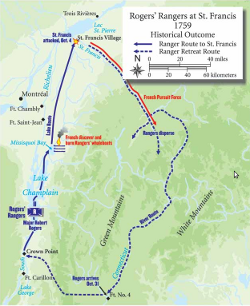Sieges and Trenches
Topic: Military Theory
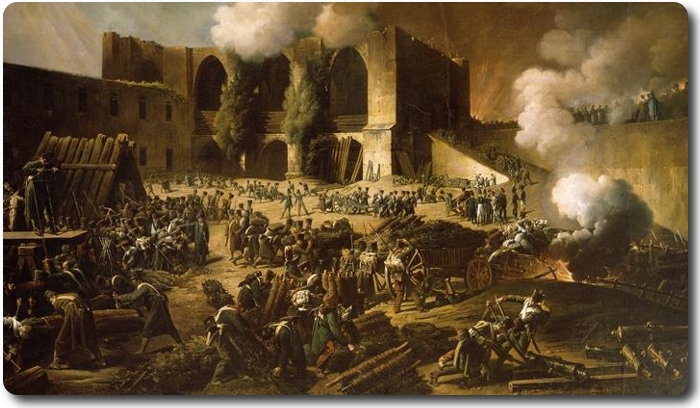
The Siege of Burgos [1812], by François Joseph Heim, 1813
Sieges and Trenches
From: The Military Guide for Young Officers, by Thomas Simes, Esq., Philadelphia, 1776
View, of a place to besiege it, it is said to be taken when the General, accompanied by the engineers, reconnoitres it, that it, rides round the place, observing the situation of it, with the nature of the country about it; as hills, valleys, rivers, marshes, woods, hedges, &c. thereby to judge of the most convenientplace for opening the trenches, and carrying on the approaches; to find out proper places for encamping the army, for the lines of circumvallation and couter-vallation, and for the park of artillery.
Approaches, are the trenches, places of arms, lodgements, sap, gallery, and all works, whereby the besiegers advance towards a place besieged.
This is the most difficult part of a siege ; and where most lives are loft. The ground is disputed inch by inch, and neither gained or maintained without the loss of men ; it is of the utmost importance to make your approaches with great caution, and to secure them as much as possible, that you may not throw the lives of your soldiers. The besieged neglect nothing to hinder the approaches; the be- away The fiegers do every thing to carry and on this depends ; them on the taking or defence of the place.
The trenches bing carried to their glacis, you attack and make yourself master of their covered way, make a lodgment on the counterscarp, and a breach by the sap, or by mines with several chambers, which blow up their intrenchments and fougades, or small mines, if they have any.
You cover yourselves with barrels, sacks, fascines, or gabions; and, if these are wanting, you sink a trench.
You open the counterscarp by saps to make yourself master of it; but, before you open it, you must mine the flanks that defend it. The belt attack of the place is the face of the bastion, when by its regularity it permits a regular approach and attacks according to art: if the place be irregular, you must not observe regular approaches, but proceed according to the irregularity of it ; observing to humour the ground, which permits you to attack it in such a manner at one place as would be useless or dangerous in another; so that the engineer who directs the attack ought exactly to know the part he would attack, its proportions, its force, and solidity in the most geometrical manner.
Siege. To besiege a place, is to surround it with an army, and approach it, by passages made in the ground, so as to be covered against the fire of the the place.
When an army can approach an so near the place as the covert-way, without breaking ground, under favour of some hollow roads, rising grounds, or cavities, and there begin their work, it is called accelerating the siege; but when they can approach the town so near as to take it without making any considerable works, the siege is called an attack.
To raise a Siege, to give over the attack of a place, quit the works thrown up against it, and the posts taken about it. If there be no reason to fear a sally from the place, the siege may be raised in the daytime. Artillery and ammunition must have a strong rear-guard and face the besiegers, lest they should attempt to charge the rear; if there be any fear of an enemy in front, this order must be altered discretionally, as safety, and the nature of the country, will allow. To make, or form a siege, there must be an army sufficient to furnish five or six reliefs for the trenches; pioneers, guards, convoys, escorts, &c., an artillery, magazines furnished with a sufficient quantity of warlike stores, of all forts, and an infirmary with physicians, surgeons, &c.
To turn a siege into a blockade, to give over the attack, and endeavour to take it by famine: for which which purpose, all the avenues, gates and streams leading into the place, are so well guarded, that no succour can get to its relief
Trench, or lines of approach and attack, a way hollowed in the earth, in form of a fosse, having a parapet towards the place be- sieged, when the earth can be removed; or else it is an elevation of fascines, gabions, wool-packs and such other things, tor covering the men as cannot fly into pieces or splinters. This is to be done when the ground is rocky; but when the earth is good, the trench is carried on with less trouble, and' the engineers demand only a provision of spades, axes, to shovels, make it and pickaxes, to make it two fathoms wide. The greatest fault a trench can have, is to be enfiladed: to prevent which, they are ordinarily carried on with turnings and elbows. As the trenches are never carried on but in the night-time, therefore the ground should be viewed and observed very nicely in the day. On the angles or sides of the there should be lodgements, or epaulements, in form of traverses the better to hinder the sallies of the garrison, to favour the advancement of the the trenches, and to sustain the workmen. These lodgements are small trenches, fronting the places besieged, and joining the trench at one end.
The platforms for the batteries are made behind the trenches; the first at a good distance, to be used only against sallies of the garrison. As the approaches advance, the batteries are brought nearer, to ruin the defences of the place, and dismount the artillery of the besieged. The batteries for the breaches are made when the trenches are advanced near the covert-way.
If two attacks, there must be lines of communication, or boyaus, between the two, with places of arms, at convenient distances. The trenches should be six or seven feet high, with the parapet, which should be five foot thick, and have banquets for the soldiers to mount upon.
Returns of a Trench, are the elbows and turnings, which form the lines of the approach, and made as near as can be parallel to the defence of the place, to prevent their being enfiladed.
To mount the trenches, is to mount guard in the trenches; to relieve the trenches, is to relieve the guards of the trenches, to dismount the trenches, is to come off guard from the trenches; to cleanse or scour the trenches, is to make a vigorous sally is upon the guard of the trenches, force to give way, and quit their ground, drive away the workmen, break down the parapet, fill up the trench, and nail their cannon.
Counter-trenches, are trenches made against the besiegers, which consequently have their parapet: turned against the enemy's approaches, and are enfiladed from several parts of the place, oil purpose to render them useless to the enemy, if they should chance to become masters of them; but they should not to be enfiladed, or commanded by any height in the enemy's possession.
To open trenches, is the first breaking of ground by the besiegers, to carry on their approaches towards a place. The difference between opening and carrying on the trenches is, that the first is only the beginning of the trench; which is always turned towards the besiegers. It is begun by a small fosse, which the pioneers make in the night on their knees, generally a musquet-shot from the place, or half a cannon-shot, and sometimes without the reach of cannon-ball, especially if there be no hollow or rising grounds to favour them, or if the garrison be strong, and their artillery well served. This small fosse is afterwards enlarged by the next pioneers which come behind them, who dig it deeper by degrees, till it be about four yards broad, and four or five feet deep, especially if they be near the place; to the end, the earth is taken out of it, may be thrown before them, to form a parapet, and cover them from the fire of the besieged. The place where the trenches are opened, is called the end of the trench.
Returns of a Trench, the turnings and windings which form the lines of the trench, and are as near as they can be made parallel to the place attacked, to shun being enfiladed. These returns, when followed, make a long way from the end of the, trench to the head, which going the straight way is very short, but then the men are exposed; yet, upon a sally, the courageous never consider the danger; but getting over the trench with such as will follow them, take the shortest way to repulse the enemy, and cut off their retreat, if possible.
Sap, a trench, or an approach made under cover, of ten or twelve feet broad, when the besiegers come near the place, and their fire grows so dangerous, as not to be approached uncovered.
Works, generally denote the fortifications about the body of a place; as by out-works are meant those without the the first inclosure. This word is used to signify the approaches of the besiegers, and the several lines, trenches, &c. made round a place, an army, &c for its security.
Posted by regimentalrogue
at 12:01 AM EDT
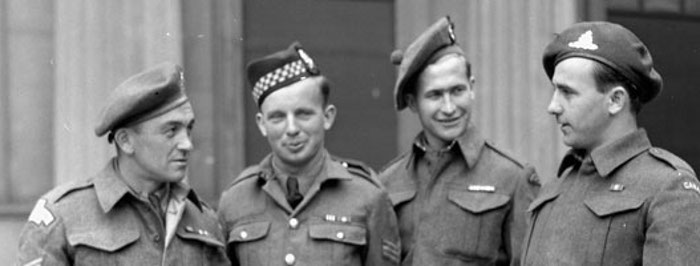









 In March 2014,
In March 2014, 

 Allard, who was Chief of Defence Staff from 1966 to 1969, said much of the problem was due to a difference in approach between those in the military who sought equipment to support
Allard, who was Chief of Defence Staff from 1966 to 1969, said much of the problem was due to a difference in approach between those in the military who sought equipment to support  Sharpe, defence chief from 1969 to 1972, suggested that not few of the firms represented at the meeting would prosper if they had to depend on the Canadian military market.
Sharpe, defence chief from 1969 to 1972, suggested that not few of the firms represented at the meeting would prosper if they had to depend on the Canadian military market. Dextraze, head of the military from 1972 to 1977, said good planning depended on a stable budget and that many of the problems were due to fluctuations in fundss promised and funds available.
Dextraze, head of the military from 1972 to 1977, said good planning depended on a stable budget and that many of the problems were due to fluctuations in fundss promised and funds available.




















 We can narrow the date of the sword to an even closer range than the years Mole manufactured swords. To start with, the most obvious indicator of period: the Royal Cypher. Marked with Queen Victoria's "VR" cypher certainly means this sword was produced no later than 1901.
We can narrow the date of the sword to an even closer range than the years Mole manufactured swords. To start with, the most obvious indicator of period: the Royal Cypher. Marked with Queen Victoria's "VR" cypher certainly means this sword was produced no later than 1901. Of these, was one unit more likely to require a set of 30 new swords? The 2nd (Special Service) Battalion, heroes of
Of these, was one unit more likely to require a set of 30 new swords? The 2nd (Special Service) Battalion, heroes of 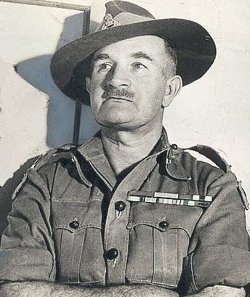



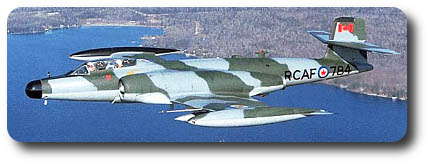
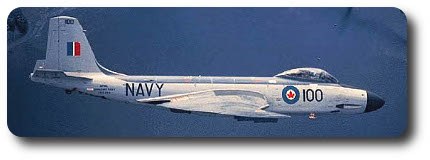






 Spokane Daily News; 3 May 1900
Spokane Daily News; 3 May 1900
